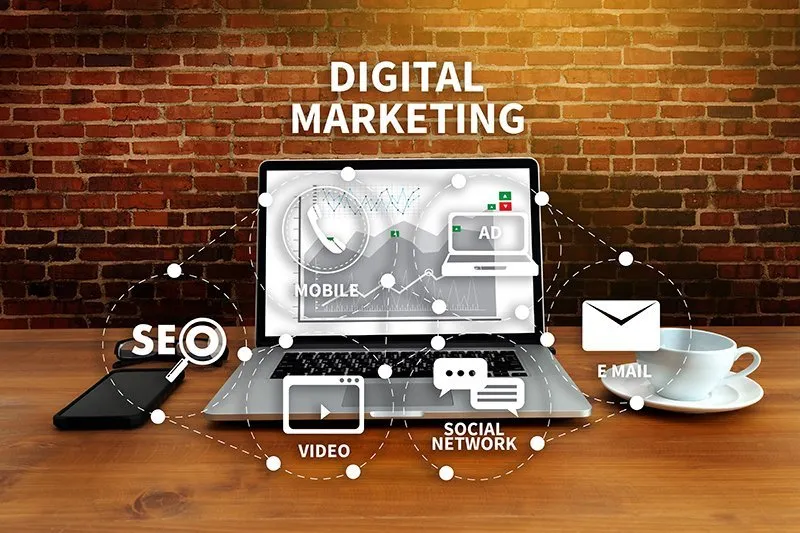In the digital age, businesses need to make their online presence as visible and impactful as possible. Two of the most powerful tools in digital marketing are Search Engine Optimization (SEO) and Search Engine Marketing (SEM). While these two strategies have different approaches, when combined, they form a perfect digital marketing duo that can skyrocket your business visibility, traffic, and conversions.
In this article, we will explore what SEO and SEM are, how they differ, and why using them together is the most effective approach to boosting your business’s online presence.
1. What is SEO?
SEO (Search Engine Optimization) is the practice of improving your website’s visibility on organic (unpaid) search engine results. SEO aims to enhance the quality and quantity of traffic to your website by optimizing various elements such as keywords, content, technical features, and backlinks. SEO is a long-term strategy that focuses on improving your website’s ranking on search engines like Google, Bing, or Yahoo.
Some key SEO strategies include:
- Keyword Research: Identifying relevant keywords that your target audience is searching for.
- On-Page SEO: Optimizing page elements like titles, meta descriptions, header tags, and content.
- Off-Page SEO: Building high-quality backlinks from authoritative websites.
- Technical SEO: Improving website speed, mobile-friendliness, and site structure.
2. What is SEM?
SEM (Search Engine Marketing) refers to paid advertising campaigns that appear on search engine results pages (SERPs). SEM primarily focuses on driving immediate traffic to your website through paid search ads, often through platforms like Google Ads. SEM is more of a short-term strategy compared to SEO, but it delivers instant visibility by targeting keywords and demographics specific to your business.
Some key SEM strategies include:
- Paid Search Ads: Displaying ads at the top or bottom of search results based on targeted keywords.
- Pay-Per-Click (PPC): Paying for each click on your ad to drive traffic to your website.
- Ad Extensions: Adding extra information like phone numbers, links, and locations to make your ads more compelling.
3. How SEO and SEM Work Together

While SEO and SEM are distinct strategies, they complement each other perfectly when used together. Here’s how they can work in synergy:
- Maximize Visibility: While SEO helps you rank organically, SEM ensures that you have visibility at the top of paid search results. Combining both strategies ensures your brand is visible across multiple search engine results.
- Improve Keyword Strategy: SEM can provide valuable insights into which keywords are driving the most traffic and conversions. You can use this data to optimize your SEO efforts by targeting high-converting keywords in your organic strategy.
- Long-Term and Short-Term Results: SEO delivers long-term organic growth, while SEM provides immediate visibility and traffic. Together, they ensure that your business benefits from both short-term gains and long-term sustainability.
4. Benefits of Combining SEO and SEM
- Increased Web Traffic: Combining organic search rankings with paid ads increases your website’s visibility and attracts more visitors.
- Higher Conversion Rates: By targeting high-intent keywords through both SEO and SEM, you can drive more qualified traffic, leading to higher conversion rates.
- Brand Awareness: Being visible on both organic and paid search results builds trust and increases brand recognition, making users more likely to engage with your business.
- Better Insights: SEM data can inform SEO strategies by revealing the most profitable keywords and market trends, while SEO data can enhance SEM targeting.
- Cost-Effective: Using SEO and SEM together allows you to allocate your budget efficiently. As your organic SEO efforts improve, you may be able to reduce your paid SEM costs over time.
5. Tips for Combining SEO and SEM Effectively
- Keyword Consistency: Ensure your keyword strategy aligns between both SEO and SEM efforts. Use the same keywords across both organic and paid campaigns to reinforce your message and increase visibility.
- Target High-Intent Keywords: Focus on keywords that show clear user intent, such as “buy now” or “best [product] near me,” which can lead to higher conversion rates.
- Optimize Landing Pages: Both your SEO and SEM campaigns should lead to well-optimized landing pages with compelling CTAs, clear value propositions, and a user-friendly design.
- Track and Measure: Continuously monitor the performance of both your SEO and SEM campaigns. Use tools like Google Analytics and Google Ads to analyze traffic sources, conversion rates, and keyword performance.
6. Common Mistakes to Avoid
- Neglecting Mobile Optimization: Mobile traffic is crucial for both SEO and SEM. Ensure that your website is mobile-friendly to improve both organic rankings and the performance of your paid ads.
- Ignoring Long-Tail Keywords: Long-tail keywords, which are more specific and less competitive, are important for both SEO and SEM. They can help you capture more qualified traffic.
- Failing to Test Ads and Landing Pages: Always test different variations of your ads and landing pages to see what resonates best with your audience and boosts conversions.
Also Read: Social Media Marketing: Secrets To Building A Loyal Online Following
Conclusion
SEO and SEM are two sides of the same coin. While SEO is a long-term strategy that builds organic traffic, SEM offers immediate results and enhances visibility. Together, these strategies help businesses achieve maximum online visibility, drive qualified traffic, and increase conversions. By combining SEO and SEM effectively, you’ll ensure that your digital marketing efforts work in harmony, providing short-term gains and long-term success.





